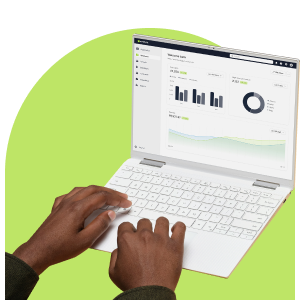Training your employees and clients on how to use your product and/or services is vital, but it can be time-consuming and taxing on your workforce. There is a way you can create impactful, engaging, and personalised training programmes that monitor your trainees’ progress yet require less input from you or your trainers. It’s with email automation workflows. This term may sound intimidating but when you learn more about it, you’ll be adding it to your marketing toolkit quicker than you can say it!
What Are Email Automation Workflows?
Over the past few weeks, we’ve been talking about email automation workflows and the ways they can bolster your marketing strategy. We’ve looked at how you can use them to nurture your leads and how they help you to seamlessly onboard new customers and employees. Before we detail how they can enhance your training programmes, let’s explore what they are.
First, let’s break down the term.
- Email Automation uses technology to send your emails automatically based on predefined rules to ensure your message reaches your contact at the time you need them to receive it. We sometimes talk about marketing automation too as – with the right platform – you can automate communication across multiple channels; think SMS, voice, and push notifications.
- Workflows are the sequence of steps your messaging follows from the start to the end of a process. Usually, you’d ensure your user completes the first step – like opening a message – before they receive the next step – the second message – and so on. In a bid to ensure the sequence is followed, you set up triggers which are events that allow the workflow to run. You can also set up triggers to send different messages based on whether a user opens each message in the workflow.
Email automation workflows therefore allow you to set up emails that automatically run in a sequence with points – called nodes – along it, which trigger actions at certain times, with strategic delays and depending on certain conditions.
These conditions for a training programme could be:
Behaviour – Based on the actions your recipients take. Let’s refer to our above example where a recipient doesn’t open the first email in the sequence of your training material within a certain timeframe. You can set up a trigger to send them a reminder email, and they won’t receive the second email with training material until the first email or the reminder email has been opened.
Location – This is handy if you want certain recipients to receive different parts of the training. An example would be to send customers in small towns an extra step of the training than customers in metros.
Personal Info – Such as birthday (to send well wishes on a customer/employee’s special day).
Particulars – Like customer tier, a customer’s order(s), an employee’s role in the company, or the type of training your customer or employee requires. You could start everyone off with the same training and trigger more advanced training material to be sent to those who require it after they reach a certain point in the sequence.
If you’re in the training or education sector, our new marketing report is packed with proven insights and the best practices to enhance your education emails. Check it out.
What You Need Before Setting Up Workflows
The first step in creating impactful email automation workflows is collecting the data you need to establish who to email, and which conditions you need to put in place for your sequence to run smoothly.
You probably already have a system for collecting your employee data. For your customers, the easiest way to collect the info you need is to build a subscription form. Be sure to be clear on what your contacts can expect and be especially clear if you’re sending promotional content. Our Popia Guide will assist you. You could ask them to fill out their name, email address, cell phone number, gender, and birthday.
For a training programme, you may want to ask your customer about their competency level or to rate how familiar they are with the product and/or service so you can enrol them for beginner, intermediate, or advance training.
Once you’ve collected the data, you’re ready to build your email automation workflow.
Learn the best practices for building your subscription forms in this blog post.
How to Build a Workflow for a Training Programme
The way in which you build your automated email journey will vary depending on the platform you use and the goal you’re trying to achieve. To give you an idea of how an email automation workflow works, here are the five steps you’d take to set up a workflow for a training programme on Everlytic’s platform:
- Enter the basic message properties for the email sender. These could be your trainer’s details.
- Create the sequence of the workflow and build the emails – along with the nodes to trigger which message to send and when. An example of a workflow for a training programme would be to:
- Send a welcome message detailing what to expect in the programme.
- You could then separate your training into modules and send one module per email.
- You would set up your nodes for different emails to send depending on whether your recipient opened their email.
- If a recipient opens the first module, you can follow-up within a certain timeframe with a quiz for them to complete.
- Once they complete the quiz, the next email module would be sent.
- However, if your recipient does not open the email with the first module within a certain timeframe, you can send a reminder email.
- Each recipient will not receive the next email until they have opened the one before it.
- Once all modules and quizzes are completed successfully, you can send a thank you email and perhaps a course completion certificate.
- Select the specific contact list to which you want to apply the workflow. For example, if you require all new customers to embark on your training programme, you would select your new customer list so that each time someone gets added, the workflow would be triggered.
- Determine when to send the emails in the sequence – as timing is important. You want to ensure you are giving your recipients enough time to open the email before sending them a reminder, and you want to also ensure they have enough time to review the training material before you send them the quiz. You can always edit these times if you find you need to tweak them.
- Confirm before publishing your email automation workflow to ensure all the details are correct.
Setting up a workflow for a training programme is just one of the ways you can use marketing automation workflows. Check out 7 other examples of how to use them in this blog post.
The Benefits of Automating Training Emails
Using email automation workflows for your training programme has a wealth of benefits. Here are some of them.
Efficiency
Using workflows to automate your emails will increase efficiency as you no longer need to send each part of the training individually within a timeframe. This will free up your or your training staff’s time, giving you greater freedom to focus on other aspects of the business or enhance the training material.
Monitoring
When monitoring training programmes manually, mistakes can creep in, for example a trainer could mistakenly forget to send a trainee a module or to enrol them for the course. These email automation workflows reduce the margin for human error, as anyone added to your specific contact list will start receiving the sequence of training materials automatically. The workflows will prompt trainees when they neglect to open their emails, and this way you can easily monitor them at each step of their training journey.
Continuity
Since a workflow triggers the same sequence for all trainees on your specified list, you can be sure everyone who you add to this list will receive the same training material within the same timeframe. This ensures continuity and equal opportunity for all your candidates.
Engaging
The continuous stream of emails in the sequence will keep your trainees engaged and feeling supported at every step of their training. This will likely boost morale and help them perform even better.
Scalable
You can constantly refine and build on your email automation workflows to scale up or trim down your training material. For example, if you find many trainees do not understand a particular section, you can replace it or add extra resources.
Personalised
So long as your platform allows, you can personalise the emails in the workflows to make your trainees feel you are speaking to them directly while they learn in their own time. You can personalise the emails by using the trainee’s name, and you can even add in certain details about them. You can also edit the workflows for certain trainees to skip a part of the training they don’t need.
Engaging Training Programmes Made Easy
Time is a precious resource, and you and your trainers can save so much of it by using email automation workflows to send and monitor your training programmes. These workflows allow you to automate the mundane tasks of physically sending emails at specific times – while still being able to keep your content personalised, impactful, and engaging. It’s a no-brainer to add them to your training toolkit.
Automate Your Training Emails Today
Training your customers and employees how to use your product and/or services is important, but it can be rather taxing too. Email automation workflows can help. Use them to run efficient, personalised, and scalable training programmes without hands-on input on mundane admin tasks from you or your training staff.



